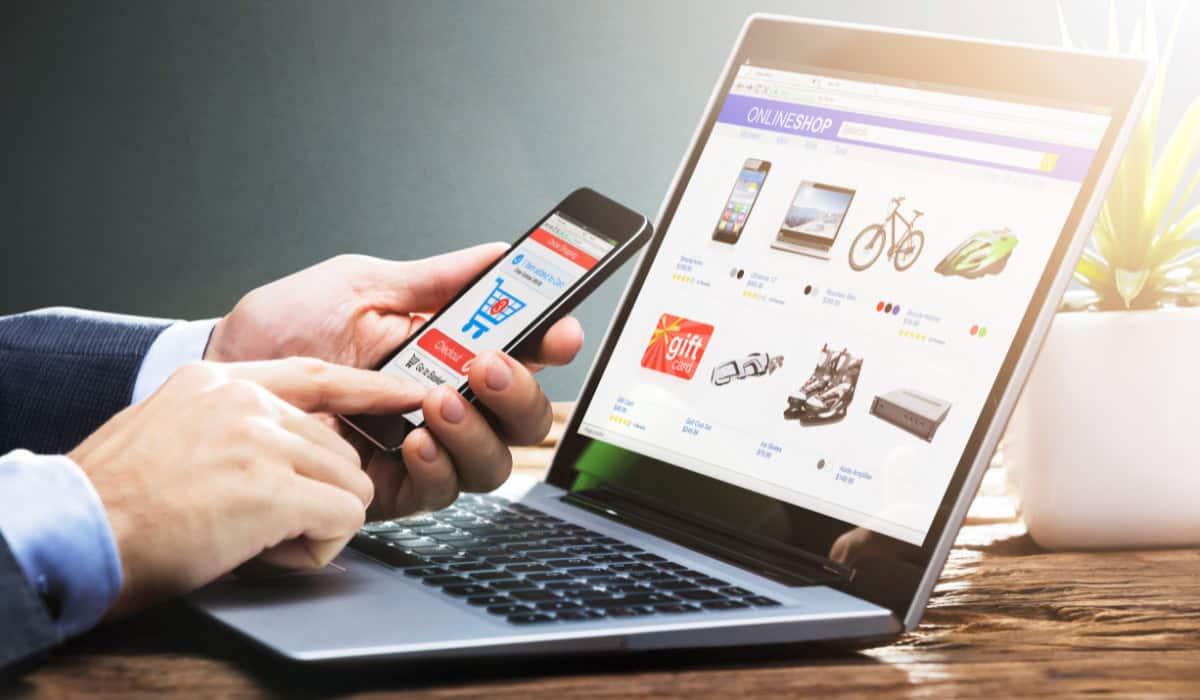
©AndreyPopov via Canva.com
Should Mobile Shopping Be Emphasized To Drive Impulse Buys?
A Wall Street Journal article, “Retailers Hate That You Buy Big Things on Your Laptop,” details how consumers are being encouraged to make online purchases on mobile phones over laptops to increase impulse buys and reduce price checking.
“Online shops as well as airlines and hotels have upgraded and pushed apps or mobile-optimized websites as a way to get our attention — and access to our wallets,” according to the article. “By using push notifications, mobile-only deals and other levers, vendors can tempt customers to make quick, unplanned purchases.”
Last year, mobile shopping reached a milestone by accounting for 51.1% of all holiday season sales placed online, up from 47% in 2022, according to Adobe.
“The preference for shopping on mobile devices goes beyond simple accessibility. Psychological factors play a significant role,” wrote Youshie in a recent study. “Smartphones fill the micro-moments of our day — waiting in line, commuting, or during short breaks. The ability to instantly browse and make purchases caters to our desire for instant gratification and our tendency towards multi-tasking. Furthermore, mobile shopping creates an environment conducive to impulse buys due to its ease and frictionless nature.”
Also driving mobile shopping and related impulse buys is social media, which is generally accessed through smartphones with their convenience and constant access. A survey last fall from Bankrate found that 48% of social media users have made an impulse purchase of a product they saw on social media, and 68% of those people regretted at least one of the purchases.
In comparison, laptop shopping lends itself to “more mindful” purchases that support the decision-making process required for big-ticket items while offering more of a chance for consumers to pause before making rash purchases, according to the WSJ article.
On laptops, the bigger screens and keyboards enable consumers to tap browser extensions to search for coupons and evaluate price changes, per the report. Opening multiple screens on laptops enables laptop users to compare hotels and flights but also price check across CPG, apparel, and other categories.
Alexander Lewis, a 31-year-old technology writer, told the WSJ that he often saves an item to his shopping cart and decides the following day whether to commit to a purchase. He said, “Having the internet always around us is an easy way to mindlessly spend our attention and also spend our money.”
According to research conducted in 2017 by Dynamic Yield, the biggest barrier to mobile shopping was “pages and links being too small,” cited by 67%; followed by security concerns, 42%; interruptions from messages, apps, and other programs, 36%; and “difficulty finding what I am looking for,” also 36%. When asked why they shop on their mobile phones, the top answer was “it saves me time,” cited by 76%; followed by “it gives me something to do,” 29%; and “I find it enjoyable,” 27%.
Discussion Questions
Does mobile shopping lend itself to significantly more impulse purchases than shopping on laptops?
Should retailers be incentivizing mobile to capitalize on impulse buys or adding safeguards to reduce them?
What should a mobile-first strategy entail?
